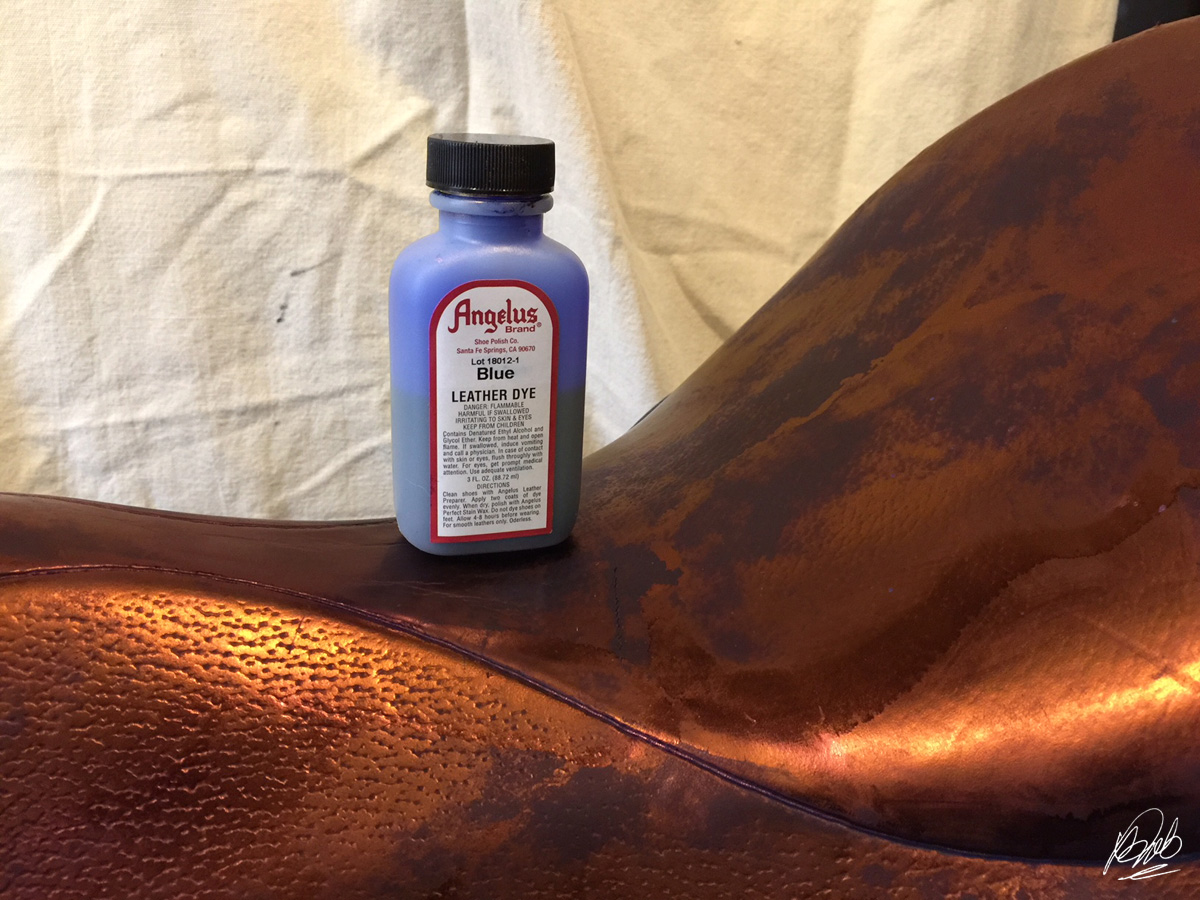Just a quickie comparison illustrating how different dyes work on old saddle leather.
Sometimes old saddle leather is like mystery meat. Vegetable tanned, drum dyed, natural, calfskin, top grain, aniline, bonded, coated - sometimes it comes down to your best guess what you're really working with.
My go-to dye on older leather is Fiebing's Professional Oil Dye. I find it penetrates mature leather better and therefore the color is more evenly saturated. Because it penetrates older leather well, rub-off is reduced.
The biggest reason I don't use alcohol-based Fiebing's dye is the weird colors that show on the dyed surface. You get some greens, purples, blues… almost like oil droplets on the surface of water. These tend to build up crusty residues with heavier applications, with disappointing results. As the crusty colors build up, it seems to penetrate less and the intended color becomes more askew.
Alcohol-based dyes tend to leave the leather very dry and stiff,
worse with each coat. This is particularly problematic when working with
older leather, since it may already be compromised. I don't find this
to be the case with oil-based dyes. I've found that on some pieces of
older leather, it actually becomes softer and better conditioned after
using oil-based dye.
 |
| Deglazed older Crosby saddle after applying the first coat of regular Fiebing's Professional Oil Dye in Black (oil-based). Notice the pure black color without the unwelcome tints. The blue highlights are actually from the reflection of my roll of painter's tape, which I used to mask off the hardware before dyeing. |
Quite simply, I avoid alcohol-based leather dye for my projects. Other people may rave about it, swear by it, love it, and that's fine by me, but I prefer oil-based dyes for saddle-type leather because it gives me consistently better results.











Post a Comment